- Joined
- Jan 28, 2019
[Done] How to see status of GA-5AX internal tag RAM and RAS Precharge Time
Hello guys
I am building a new old sockel 7 machine using the Gigabyte GA-5AX board (Rev. 5.2, latest BIOS F4). Now I have several questions:
My board has ALi Aladdin V chipset revision H so the internal tag RAM should work. However, as far as I understand, there seems to be a second external tag RAM chip on the board: EliteMT LP61256GS-8


1. How can I see whether the internal tag RAM is enabled or not?
--------------------------------------------------------------------------------------------------------
I took a look at the default chipset registers using modbin 4.50.77 but this says nothing to me:
View attachment Chipset_Registers_Default_page1.bmpView attachment Chipset_Registers_Default_page2.bmp
There is a program called WPCredit that explains these registers entries and can be used to modify them but you need a special PCR file that I don't have.
2. Has anyone this file and would provide it to me?
-----------------------------------------------------------------------------------
I use 2x 256 MiB RAM of this type: Crucial PC133U-222-542 (CT32M64S4D7E.16T / MT16LSDT3264AG-13EB1). When setting FSB at 83 MHz the chipset uses tRP of 2. When using higher FSB settings (95 MHz, 100 MHz) the chipset increases tRP to 4. Exactly the same RAM modules work with tRP 2 at FSB 133 MHz in my Asus Tuls2-C.
There seems to be some entries for different FSBs in the BIOS:
View attachment Auto_Table_50MHz.bmpView attachment Auto_Table_60MHz.bmpView attachment Auto_Table_66MHz.bmpView attachment Auto_Table_75MHz.bmpView attachment Auto_Table_83MHz.bmpView attachment Auto_Table_90MHz.bmpView attachment Auto_Table_95MHz.bmpView attachment Auto_Table_100MHz.bmp
3. Please, can someone explain these to me? Do they have anything to do with RAM timings?
---------------------------------------------------------------------------------------------------------------------------------------
There also seem to be some entries for Cyrix CPUs:
View attachment Chipset_Registers_Cyrix.bmp
3. Please, can someone explain these to me?
I think that are enough questions for one post. More at another time
Greetings
Hello guys
I am building a new old sockel 7 machine using the Gigabyte GA-5AX board (Rev. 5.2, latest BIOS F4). Now I have several questions:
My board has ALi Aladdin V chipset revision H so the internal tag RAM should work. However, as far as I understand, there seems to be a second external tag RAM chip on the board: EliteMT LP61256GS-8
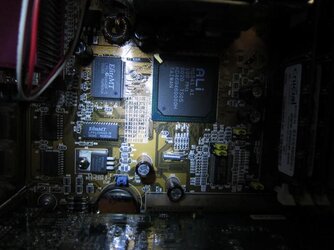
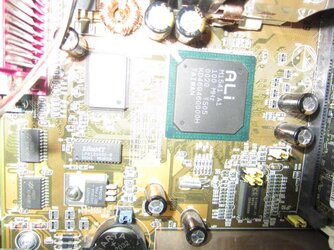
1. How can I see whether the internal tag RAM is enabled or not?
--------------------------------------------------------------------------------------------------------
I took a look at the default chipset registers using modbin 4.50.77 but this says nothing to me:
View attachment Chipset_Registers_Default_page1.bmpView attachment Chipset_Registers_Default_page2.bmp
There is a program called WPCredit that explains these registers entries and can be used to modify them but you need a special PCR file that I don't have.
2. Has anyone this file and would provide it to me?
-----------------------------------------------------------------------------------
I use 2x 256 MiB RAM of this type: Crucial PC133U-222-542 (CT32M64S4D7E.16T / MT16LSDT3264AG-13EB1). When setting FSB at 83 MHz the chipset uses tRP of 2. When using higher FSB settings (95 MHz, 100 MHz) the chipset increases tRP to 4. Exactly the same RAM modules work with tRP 2 at FSB 133 MHz in my Asus Tuls2-C.
There seems to be some entries for different FSBs in the BIOS:
View attachment Auto_Table_50MHz.bmpView attachment Auto_Table_60MHz.bmpView attachment Auto_Table_66MHz.bmpView attachment Auto_Table_75MHz.bmpView attachment Auto_Table_83MHz.bmpView attachment Auto_Table_90MHz.bmpView attachment Auto_Table_95MHz.bmpView attachment Auto_Table_100MHz.bmp
3. Please, can someone explain these to me? Do they have anything to do with RAM timings?
---------------------------------------------------------------------------------------------------------------------------------------
There also seem to be some entries for Cyrix CPUs:
View attachment Chipset_Registers_Cyrix.bmp
3. Please, can someone explain these to me?
I think that are enough questions for one post. More at another time
Greetings
Last edited:

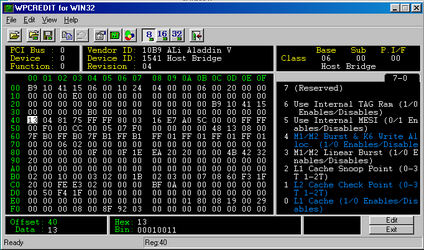
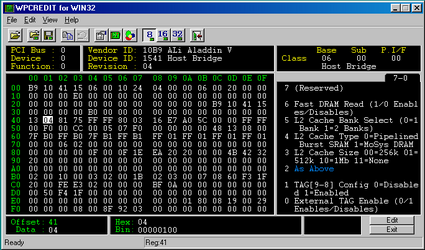
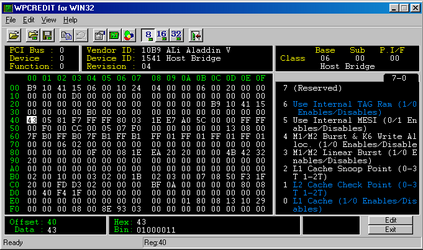
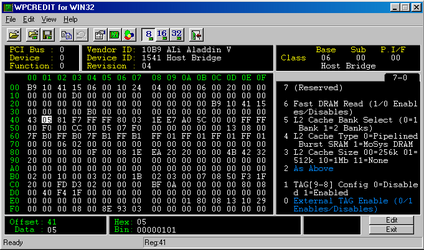
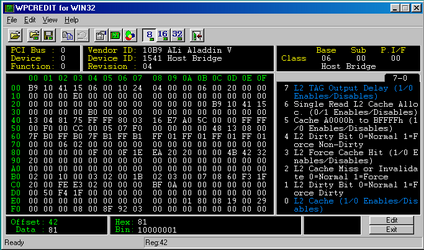

 . And sorry for answering so late, I wasn't here for a long time.
. And sorry for answering so late, I wasn't here for a long time. .
.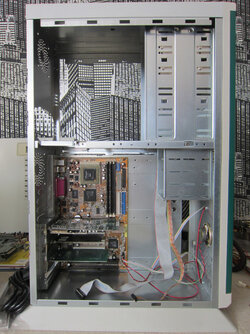
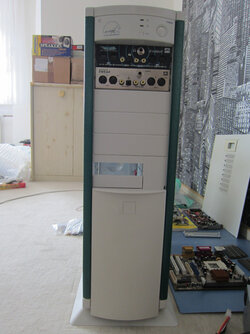
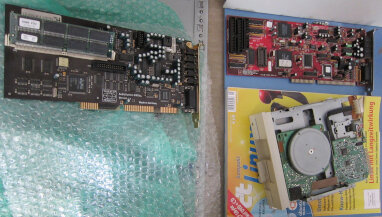

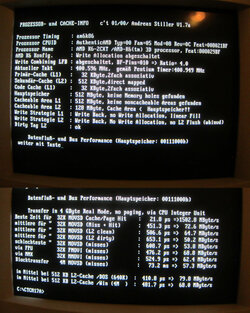
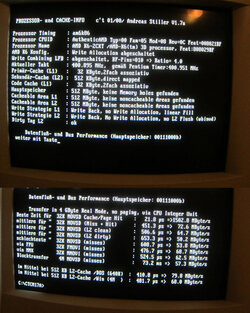


 and didin't unterstand 1% of the experiences you have collected and written down there
and didin't unterstand 1% of the experiences you have collected and written down there 